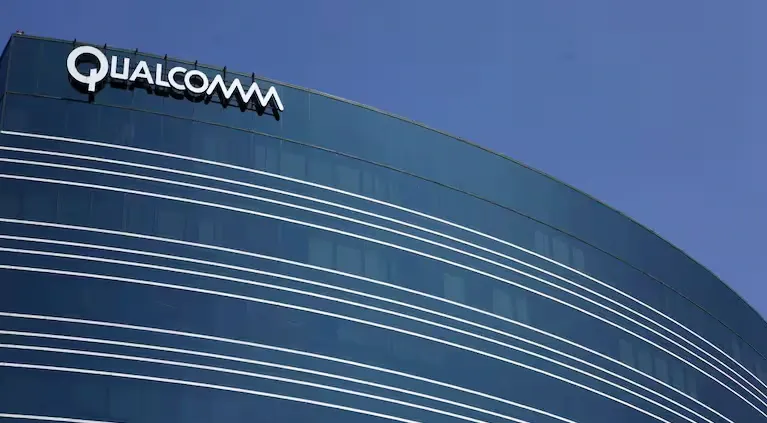Intel's Strategic Shift: Exiting Arm Holdings as AI Competition Heats Up
Intel's sale of its Arm Holdings stake signals a strategic retreat as it struggles to compete with Nvidia’s dominance in the AI chip market.
Intel Corporation, a storied leader in the semiconductor industry, is navigating one of its most challenging periods in recent history. In an effort to restructure and stabilize its business, Intel has sold its $147 million stake in Arm Holdings, a decision that underscores the company’s struggle to regain its footing amidst fierce competition, particularly in the rapidly growing AI chip market dominated by Nvidia.
Divesting Arm Holdings: A Sign of Financial Strain
The sale of Intel's stake in Arm Holdings was revealed in a regulatory filing and comes at a critical juncture for the company. Once a titan in the semiconductor industry, Intel has seen its dominance wane as competitors like Nvidia and AMD have surged ahead. The decision to sell its shares in Arm, a key player in the semiconductor design industry, reflects Intel's urgent need to shore up its finances. The proceeds from the sale, approximately $147 million, provide a much-needed infusion of cash as Intel undertakes significant cost-cutting measures, including the elimination of 15,000 jobs by the end of 2024.
This move is part of a broader strategy to reduce operating expenses by $10 billion over the next two years. Intel has also suspended its dividend, signaling the severity of its financial challenges. These austerity measures are aimed at stabilizing the company, which reported one of the worst earnings in its 56-year history, including a second-quarter loss of $1.6 billion.
The AI Chip Battle: Nvidia’s Meteoric Rise
While Intel is grappling with internal restructuring, Nvidia has firmly established itself as the leader in the AI chip market. Nvidia's data center business has exploded, growing by 217% in fiscal year 2024 to generate $47.5 billion, a figure that dwarfs Intel’s $15.5 billion in the same sector. Nvidia’s GPUs, which are essential for AI workloads and high-performance computing, have become the standard for cloud service providers like AWS, Google Cloud, and Microsoft Azure. This success is largely due to Nvidia's strategic focus on AI, which has driven unprecedented demand for its products.
Nvidia’s dominance in the AI chip market is not just about hardware; the company has also cultivated a robust ecosystem around its software platform, CUDA. This platform has become deeply entrenched in the AI development community, making it difficult for competitors like Intel to break through, despite their efforts to develop alternative AI chips like the Gaudi2.
Intel’s Challenges: A Struggle to Compete
Intel’s difficulties in competing with Nvidia are multifaceted. Despite launching new AI products, Intel has been unable to match Nvidia’s level of adoption among developers and cloud service providers. Nvidia’s GPUs are not only more powerful, but they also command higher prices, contributing to Nvidia’s superior financial performance. This has left Intel reliant on its traditional CPU business, which is increasingly under pressure from both Nvidia’s GPUs and AMD’s x86 server CPUs.
Furthermore, Intel’s data center business has been hit hard by these competitive pressures. While AI servers still require CPUs, these components are typically outnumbered by GPUs in high-performance systems, reducing Intel’s share of the market. The company’s data center revenue has suffered as a result, exacerbating its overall financial woes.
The Long Road Ahead: Intel’s Future in AI
As Intel continues to restructure, its ability to compete in the AI chip market remains a critical question. The sale of its Arm stake, while providing short-term financial relief, may also indicate a retreat from sectors where Intel once sought to expand its influence. Arm, which has made significant inroads into the desktop CPU market with its architecture, poses a growing threat to Intel’s traditional dominance. By divesting from Arm, Intel may be ceding valuable ground to competitors in this crucial area.
Looking forward, Intel’s success will likely hinge on its ability to innovate and compete in the AI and data center markets. The company has already invested in AI-focused products and has outlined a vision for growth in this area. However, the road ahead is fraught with challenges, particularly as Nvidia continues to push the boundaries of what is possible in AI computing. For Intel, the next few years will be pivotal as it seeks to reclaim its position as a leader in the semiconductor industry.
Intel’s journey is emblematic of the broader shifts occurring in the tech industry, where AI and data-centric computing are reshaping the competitive landscape. Whether Intel can adapt to these changes and emerge stronger remains to be seen, but its recent moves highlight the high stakes involved in this rapidly evolving market.






